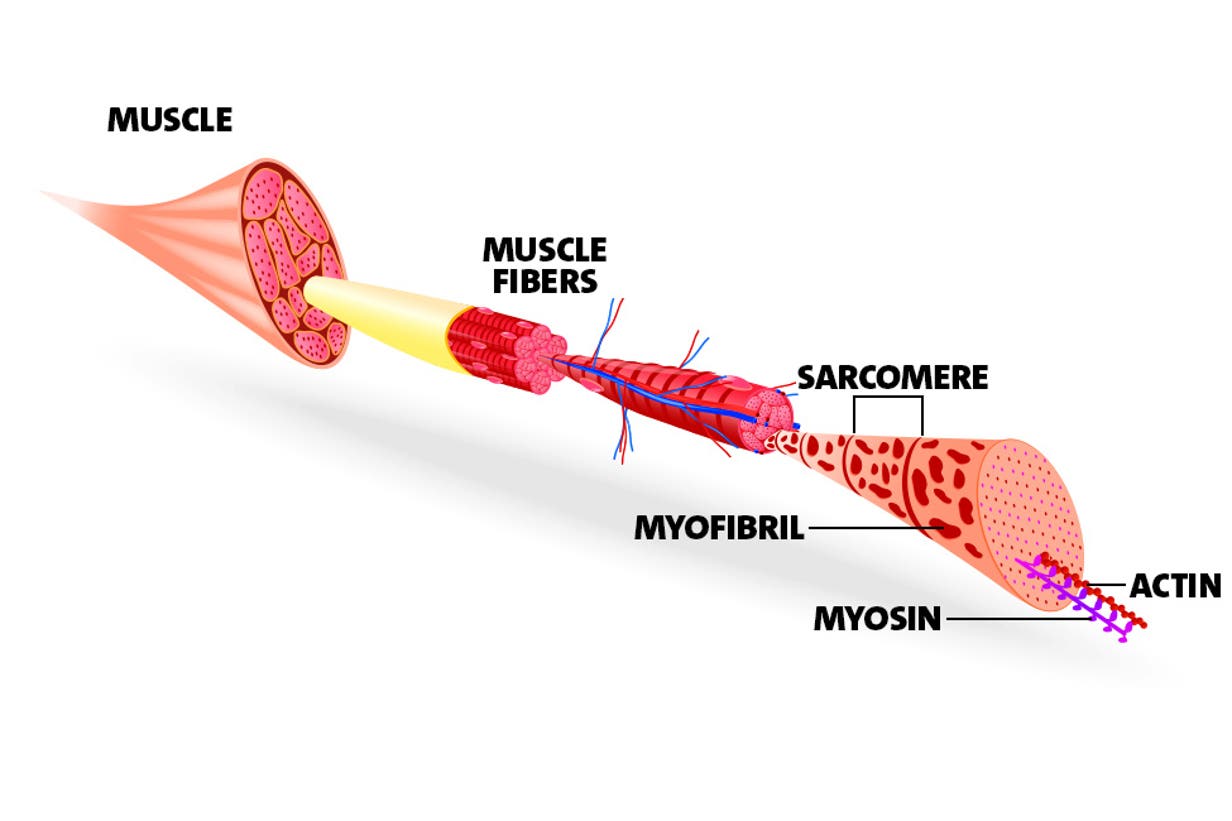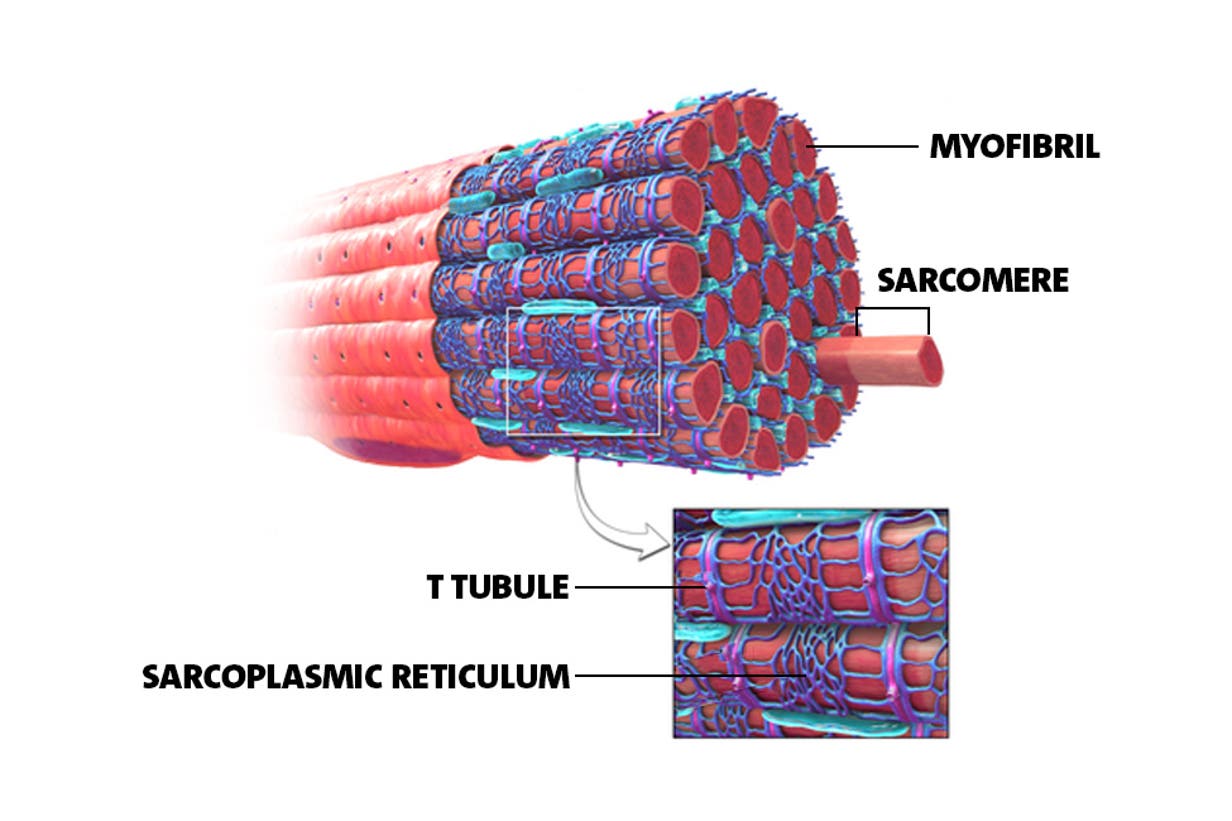From performing a pullup to shifting gear or even just reaching for the tv remote control – every movement you make relies on the work of your muscles. Their task is to move parts of the body actively and in relation to each other. As an athlete, movement should never just be something you do. Understanding biomechanics and the way your muscles move and contract is not just essential to improve athletic performance, it’s also required to learn why muscle soreness occurs and from this, how it can be prevented. Got your attention? Then let’s find out more.
The 3 types of muscle contraction
Before we get real scientific, you should understand what “muscle contraction” means and how a muscle contracts. A muscle contraction is defined as a “high tension-generating state” and is always followed by a “low-tension generating state”. In simplified terms, this just means the muscle is put under tension and then relaxed.
Muscle contractions can be divided into 3 different types: concentric, isometric and eccentric. Never heard of them? No stress. They’re actually pretty straightforward movements. Let’s imagine something as simple as grabbing a glass of water. This covers all 3 of the biceps muscle contractions:
- Picking up a water bottle and moving it towards your mouth asks for a concentric muscle contraction. Concentric involves the muscle being shortened.
- Holding the water bottle still whilst you drink requires an isometric muscle contraction. Isometric involves your muscle being held under tension without movement.
- Moving the water bottle away calls for an eccentric muscle contraction. Here, the muscle is lengthened.
Now that we’ve covered the basics, let’s dive deeper into the topic and find out how the muscles are structured. We’re about to throw some unfamiliar names at you so try to stay with us.

How is a muscle structured?
A skeletal muscle is made up of muscle fiber bundles. Each of these fibers is composed of many myofibrils which again are formed of units called sarcomeres. When you look at an individual sarcomere they are composed of thick and thin fibers. The thick fiber is called myosin and is connected to the center of the sarcomere. The thin fiber is called actin and is connected to the edge of the sarcomere. Basically these slide past each other to shorten the entire sarcomere unit and with it the entire muscle.

What makes the muscle contract?
Picking up a glass of water seems pretty straightforward from the outside, but you’re about to be blown away at how complex this “simple” movement is. Here is a simplified explanation to help you understand:
This contraction comes down to the so-called mechanism of excitation contraction coupling (E-C coupling). An electric stimulation is followed by a mechanic reaction. What does this mean? Whenever a nerve impulse (action potential – electric stimulation) arrives at the muscle cell telling the muscle to contract, it is spread across the surface of the sarcomeres, down to the T-tubule. Calcium ions are then released by the sarcoplasmic reticulum which bind the actin fibers. What happens next is, the myosin attaches to the actin myofilaments pulling the actin towards the center of the sarcomere. You can imagine this process as if the myosin filaments “row” towards the center of the sarcomere, making it “shorter”. The muscle is now concentrically contracted which creates the mechanical reaction.
How does the muscle relax afterwards? The sarcoplasmic reticulum actively pumps the calcium ions back inside whenever there is no more nerve impulse, or more precisely: no action potential. The binding of myosin and actin loosens and actin slides back into its normal position, bringing the sarcomere back to its normal length.
And so that’s pretty much what’s behind this “simple” movement. We know what you’re thinking right now, and yes your body really is an incredible machine!
Why do you need to know all of this?
You’re probably wondering…this is all very scientific, why do I need to know it? This is the starting point of understanding how muscles grow and why you experience muscle soreness – something that we, as athletes, should all be aware of. Through repetitive muscle contractions – especially through eccentric contractions – you cause certain structures within the muscle to be affected. Here, the connection lies between the contractions and the structures which initiate them, with muscle soreness being the result of the affected and harmed structures within your muscles.
Let’s recap
The task of your muscles is to move parts of the body actively and in relation to each other. There are 3 different types of muscle contractions: concentric, isometric and eccentric. All of which are often included in even the simplest of movements, for example drinking from a bottle of water. Although the structure of a skeletal muscle and the contraction process seems complex, learning and understanding the basics are necessary if you want to improve your performance and understand how muscle soreness evolves. And this is just beginning. We’ve got plenty more interesting information on the topic of muscle soreness. Read on to find out how it develops.